Future of Mulesoft: Integration Trends to Watch in 2024 and Beyond
Salesforce
5 MIN READ
August 29, 2024

Nowadays, if we understand in depth of the business world, then automation is no longer a luxury but a need that helps to grow. With the advancement of technology, businesses get the opportunity to bring their businesses to the next level.
There comes, Salesforce Mulesoft, a platform that helps businesses to collaborate with various applications, systems, and devices across the enterprise. By utilizing this technology, businesses can optimize their Robotic Process Automation implementation and help to achieve greater automation success.
If we talk about its Mulesoft advantages then it includes the reduction of time and effort needed for the data integration. Its data integration capabilities help businesses connect the systems and automate the data workflows that improve data accuracy and efficiency. By monitoring the business processes, enterprises can reduce the risk of human error and this makes employees start focusing on other strategic tasks.
Let’s move to the section and understand how to revolutionize the Salesforce Mulesoft integration landscape. In this blog, we will explore the expected advancements and trends of Mulesoft that help businesses improve.
An Introduction to Mulesoft with its Integration
Mulesoft was acquired by Salesforce in 2018 and since then it has been at the forefront of allowing organizations to integrate with business applications, data, and devices in a centralized way. Mulesoft’s flagship product, known as the Anypoint platform forces enterprises to build application networks that are more secure and scalable.
As we move ahead in 2024, Mulesoft is expected to continue its innovation that addresses emerging challenges and works on leveraging the latest technologies to enhance the integration system.
Future of Salesforce Mulesoft Integration with its Key Trends 2024
-
Increased AI Adoption and Machine learning Integration
AI and ML both play an efficient role in Salesforce integration. When we talk about Mulesoft, it is likely to have integration with AI-driven features into a particular platform to enhance business automation, improve decision-making, and optimize the integration process. However, Artificial intelligence focuses on giving the right guidance in predictive analytics, anomaly detection, and automating data mapping that automatically reduces the time needed for complex integrations.
-
Increased Focus on Hyperautomation
Hyperautomation is a key trend that emphasizes the automation of all possible processes within an organization. MuleSoft’s integration platform will likely play a central role in this movement by enabling the automation of complex workflows and processes across diverse systems. With the integration of advanced robotic process automation (RPA) and AI capabilities, MuleSoft will help organizations achieve greater operational efficiency and agility.
-
Increased Support for Low-Code/No-Code Development
The low-code/no-code development movement is revolutionizing the way applications are built and deployed. MuleSoft is expected to integrate more low-code and no-code tools into its platform, enabling users with minimal technical expertise to design and manage integrations. This democratization of integration capabilities will empower more users across the organization to contribute to integration projects and accelerate digital transformation initiatives.
-
API Ecosystem Expansion
APIs are an important part of the modern Salesforce integration strategies and their value will start growing in the upcoming years. Mulesoft is expected to further expand with API management capabilities that provide advanced tools for API governance, security, and lifecycle management. In addition, the evolution of microservices architecture improves the need for having dynamic and scalable API solutions where Mulesoft goes on the rise.
-
Well-Defined Hybrid and Multi-Cloud Integration
Enterprises started adopting hybrid and multi-cloud environments and their demand for instant integration across the different cloud platforms has risen. Salesforce Mulesoft’s Anypoint platform is expected to evolve and start supporting robust hybrid and multi-cloud integration capabilities. This feature allows enterprises to work best on both modes with 100% security or performance.
-
Enhance Data Integration and Management
Data is the cornerstone of business that enforces digital transformation and data integration is considered important to unlock the full potential. Salesforce Mulesoft here improves the data integration features that offer high-level business tools for effective data mappings, transformation, and synchronization. Even with the increased importance of real-time data processing, Mulesoft offers advanced capabilities for data integration.
-
Cybersecurity Comes First
When we talk about the focus priority of Salesforce Mulesoft Integration, security, and compliance always stayed on the top level. With the increase in cyber threats and regulatory requirements, Mulesoft expected to introduce more advanced security features, including encryption, access controls, and threat detection mechanisms.
Mulesoft continues to evolve in the digital shop to ensure compliance with global data protection regulations and provide businesses with advanced tools to meet legal obligations.
Read More: Top 8 Salesforce Middleware Integration Tools Recommended
Core Capabilities of Salesforce MuleSoft
-
API Management:
MuleSoft’s Anypoint Platform provides robust tools for designing, managing, and monitoring APIs. The platform supports the full API lifecycle, from creation and testing to deployment and monitoring. With comprehensive API management, organizations can ensure secure, scalable, and efficient API interactions, paving the way for a more connected and agile digital ecosystem.
-
Integration Connectors:
MuleSoft offers a wide array of pre-built connectors that facilitate seamless integration with various systems, applications, and data sources. These connectors cover popular applications such as Salesforce, SAP, and Microsoft Dynamics, as well as various databases and cloud services. By leveraging these connectors, organizations can rapidly integrate their existing systems and applications without extensive custom development.
-
Data Transformation:
The Anypoint Platform includes powerful data transformation capabilities that enable organizations to convert data from one format to another seamlessly. With tools like DataWeave, MuleSoft’s data transformation language, users can efficiently map, filter, and transform data to meet their specific needs.
- Real-time and Batch Processing:
MuleSoft supports both real-time and batch processing, allowing businesses to handle various integration scenarios effectively. Whether you need real-time data synchronization or scheduled batch updates, MuleSoft’s platform provides the flexibility and scalability to meet your requirements.
-
Cloud and On-premises Integration:
MuleSoft’s platform is designed to handle both cloud and on-premises integrations. This hybrid approach ensures that organizations can integrate systems and applications regardless of their deployment environment, providing a unified view of their operations.
Mulesoft’s Integration with Salesforce: The Future Perspective
Investing in Salesforce Mulesoft results in a significant improvement and this trend will continue to increase for upcoming years. Integrating Salesforce Mulesoft allows instant connectivity between Salesforce’s Customer 360-degree platform and its enterprise systems. This forces businesses to create customized customer experiences that utilize data from various technology stacks.
Best Mulesoft Integration Practices For Businesses in the Future
-
Invest in Skill Development
While integrating Mulesoft into your Business, you must make sure that your team has all the necessary skills and knowledge about new features and trends. After all, investing in training and upskilling your team helps you to stay ahead of the curve.
-
Adopt API-Led Connectivity
Making the use of an API-Led connectivity strategy works on building flexible and scalable integration architecture. This helps your organization to embrace themselves for changing business needs and technologies.
-
Focus on Security and Compliance
Nowadays, environments where integrations are done become complex, which improves security and compliance. By reviewing and updating your security policies, you can focus on best practices and regulatory requirements.
-
Automation and Artificial Intelligence
By leveraging the use of AI and automation, you can optimize the Salesforce Mulesoft integration process. Even it reduces the manual efforts that directly improve business efficiency, reduce errors, and accelerate the time-to-market.
-
Plan for Hybrid and Multi-Cloud Integration
For the expansion of the organization’s cloud, it is a must to develop a clear and well-defined business strategy for hybrid and multi-cloud integration. Mulesoft’s evolving abilities for businesses help to connect with disparate systems for a centralized digital ecosystem.
Choose Ksolves For Your Salesforce Mulesoft Integration: A Future Proof Strategy
Ksolves expert in integrating the Salesforce Mulesoft and it offers the best collaboration with deep expertise, and customized solutions, and gives a future-proof approach. With years of expertise across various industries, Ksolves certified professionals make sure that your integration is scalable and ready to adapt to advanced technologies.
By connecting with Ksolves, you can get access to continuous support and innovation to make sure that Salesforce Mulesoft integration makes your business more valuable. Connect with Ksolves for a future integration solution, you can email sales@ksolves.com.
Wrapping-Up
The future of Mulesoft integration as understood by the above information is extremely bright with the right focus on AI, API expansion, hybrid cloud integration, enhanced data management, and robust security. Businesses who want to explore Mulesoft’s Anypoint platform and want to stay ahead of the curve, adopt the best practices, and achieve digital transformation goals in 2024 and beyond.
As the Salesforce Mulesoft grows with the latest trends and boundaries, it also pushes itself in a better direction. Organizations that worked on these advancements helped themselves to be positioned in a well-way in this digitally connected world.

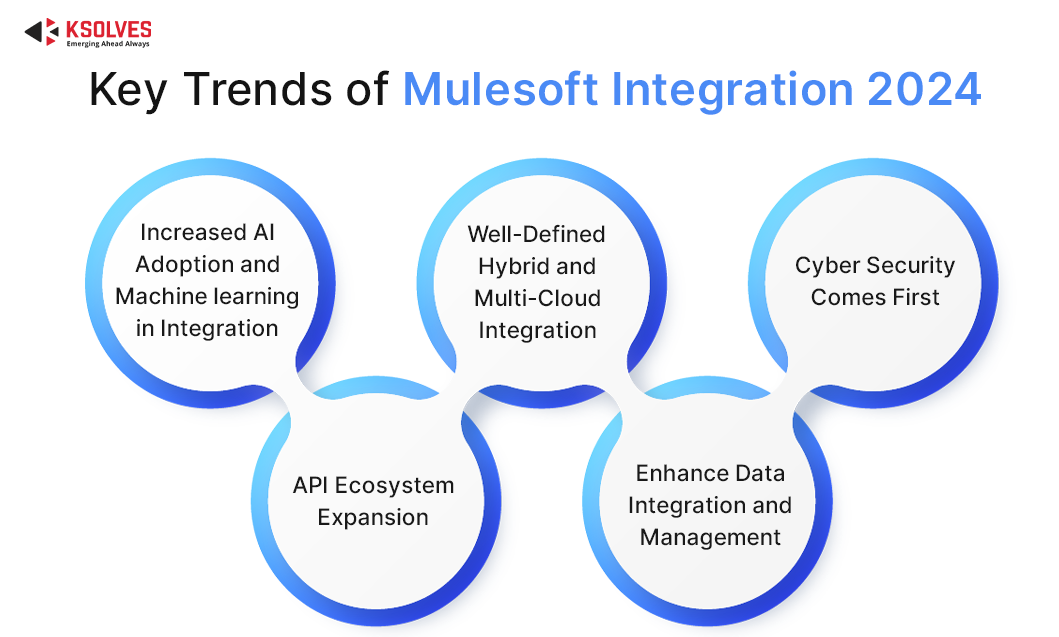
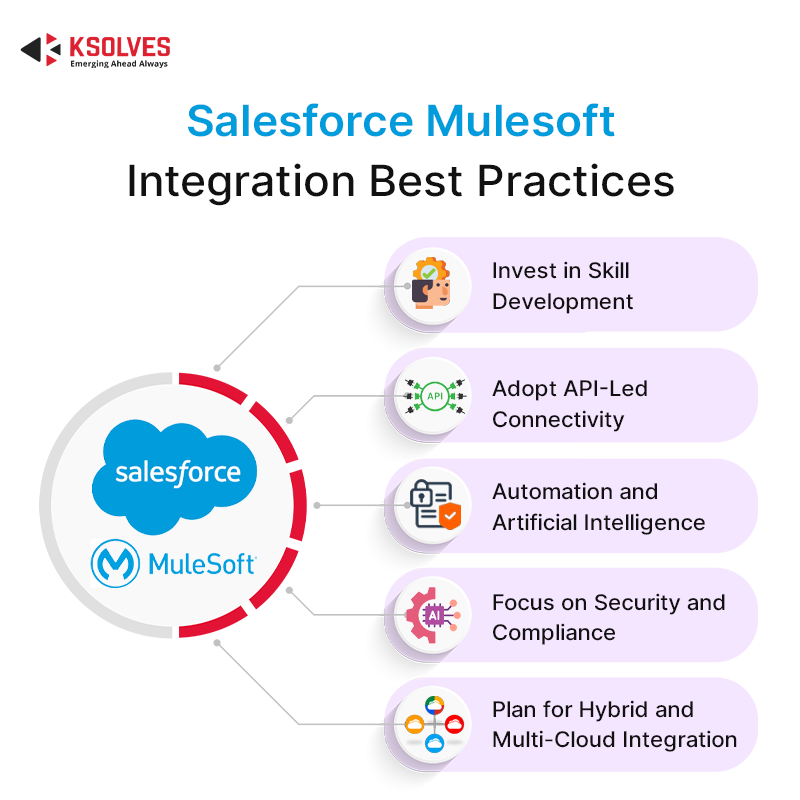
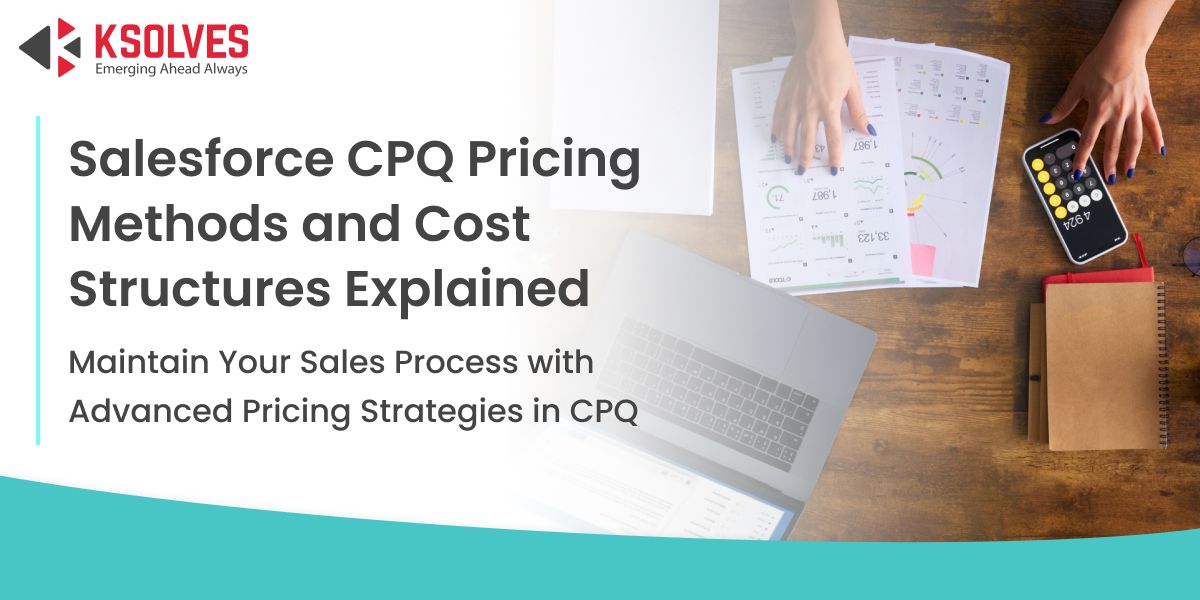
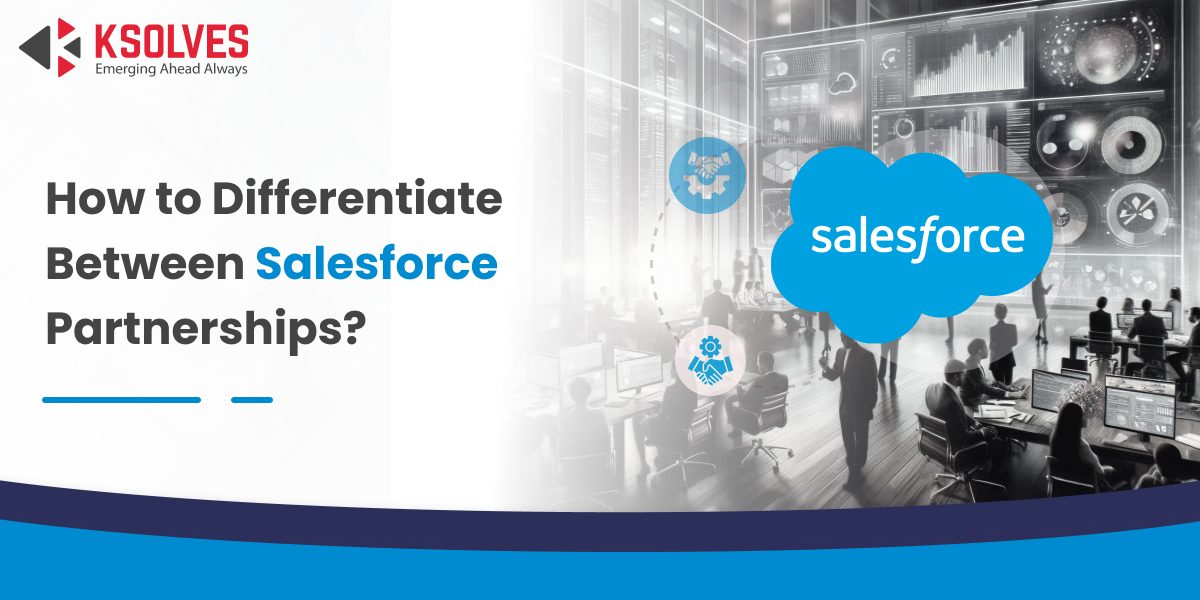
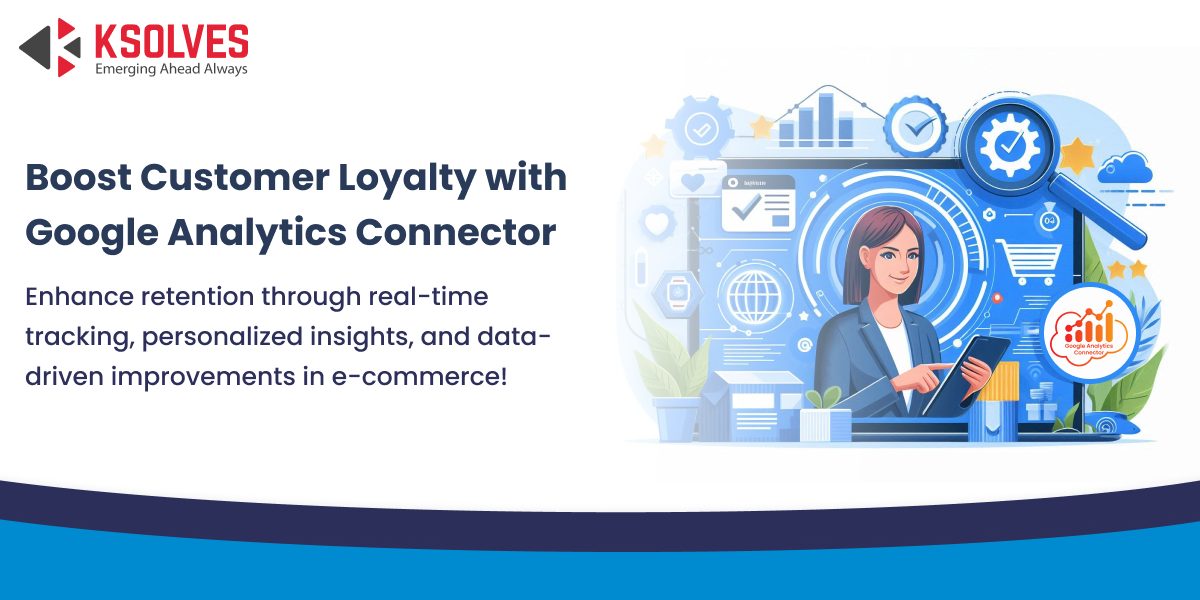

AUTHOR
Share with